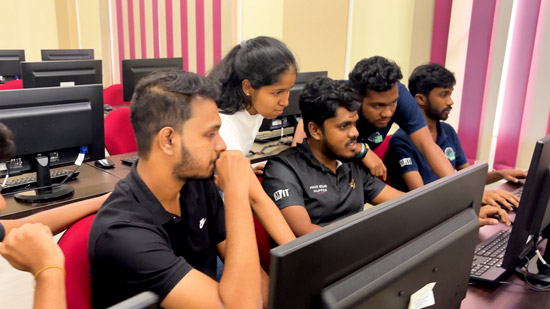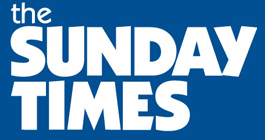A plastic waste project that was much more than just an assignment
It was just another ordinary day when my phone rang, jolting me from my routine. It was Shan (Dr. Shan Jayasinghe), a close friend of mine at my own academic workplace, at the Department of Industrial Management, University of Kelaniya, Sri Lanka. “Hey, dude,” he started, his voice buzzing with excitement. “A friend of mine in Australia has this data annotation project for plastic waste categorization. He thinks we could do it with our students. What do you say?”
Something about Shan’s enthusiasm was infectious. Without hesitating, I responded, “Let’s do it, Machan!”
Before long, Dr. Chathura Rajapakse and Thilini Mahanama joined our team, and suddenly, what began as a casual conversation was turning into a full-fledged initiative. Our first meeting with the University of Melbourne team that initiated the project felt like a turning point. The room was filled with excitement as we shared ideas, worked through the details, and began to see the shape of what this project could be.

A challenging journey that brought out the best: Students working on the plastic waste project
Our first big challenge was selecting the right students for the job. After much deliberation, we settled on ten promising second-year students and added three juniors who had shown exceptional promise.
Just as we were beginning to hit our stride, the country’s economic crisis hit us like a tidal wave. Fuel shortages, skyrocketing prices and constant power cuts became our everyday reality. It felt like the whole world was conspiring against us. The first server had to be configured at least seven or eight times, each time interrupted by another blackout. We couldn’t even scrape together enough funds for an extra UPS to keep our systems running smoothly. Amid all the chaos, Dr. Ruwan Wickramarachchi stepped in – arranged a virtual machine for us, bringing a bit of stability to our otherwise unpredictable situation.
Despite all these setbacks, the students pressed on. They huddled in makeshift work spaces, sometimes using their own data connections to keep things moving. Watching them work so hard, often late into the night, so determined, made me realize just how much this project meant—not just to us but to everyone involved. It was no longer just about categorizing plastic waste; it was about resilience, about finding ways to keep going when everything else was falling apart.

Our next major hurdle was one we hadn’t fully anticipated: accessing the images from Melbourne. It seemed simple on paper, just a matter of clicking ‘download,’ but connectivity was a constant battle, and every click felt like a roll of the dice.
Despite all the obstacles, the students never wavered. They understood that this was bigger than just a university project; it was a lifeline in the midst of a national crisis. With phones in hand, they roamed the Faculty of Science, searching like treasure hunters for that elusive signal for internet connections. There was something deeply moving about seeing these young minds, normally full of the usual college worries, now navigating the digital trenches. They weren’t just downloading images—they were participating in an unspoken act of resistance against the circumstances that threatened to stall their progress.
Thankfully, we weren’t alone in this struggle. We had the backing of some key figures who believed in what we were doing. Vice-Chancellor, Prof. Nilanthi de Silva, always a voice of reason, stepped in with valuable advice. The Dean, Prof. Kalingamudali offered resources when we needed them the most, and our Department head, Prof. Janaka Wijayanayake, became our guiding light when things got tough. Navigating the maze of university bureaucracy felt like trying to sail through a storm without a map, but with his calm guidance, we found our way.
As the weeks passed, the project’s momentum grew. What started as a small, experimental team quickly transformed into something much larger. Requests from students eager to join poured in, and soon, we found ourselves expanding the project to include the entire second-year cohort. First-year students were brought on board next. The initiative had taken on a life of its own, far exceeding anything we had originally envisioned.
At the later stage, we expanded this project to perform annotation with automated process. By the time we wrapped up in December 2023, nearly 100 students were actively involved, each one contributing in ways that enriched the project beyond measure.
Over 50 different forms of plastic categories were found, and robots were employed to sort them. To train the different types of plastic, a decision to annotate 1,000,000 objects, which is by no means an easy task, was made. Out of those objects, the team was given a target of 500,000 objects to be annotated. After one year and with 100+ students we were able to annotate 540,000 objects.
It wasn’t just a data annotation exercise – it had grown into a full-fledged operation with layers of complexity. We had to quickly adapt, assigning specific roles and responsibilities to keep everything on track. Teams were created for data management, quality control, technical support, and even student coordination. The scope of the work had expanded so much that managing it felt like running a small company. But despite the challenges, there was a sense of camaraderie that kept us going. The campus buzzed with a newfound energy, and it was impossible not to get swept up in it.
The project, once a fledgling idea born out of a simple phone call, had turned into a cornerstone of our academic year. It had provided an opportunity for students to learn, earn, and contribute to something meaningful, while battling the challenges of an uncertain world. And as I looked around at what we had built together, I realized that this was more than just a project—it was a testament to the power of collective effort, resilience, and the unyielding spirit of our students.
In the end, we hadn’t just completed a project; we had created a community. And that, more than anything, was the true success of our endeavour.
Each student received compensation based on their contribution. Watching them earn something of their own was immensely satisfying. But for the senior committee, including myself, the choice was unanimous: we wouldn’t take a cent. We took home something far more valuable: the joy and fulfilment of seeing our students grow, persevere, and succeed. As in “Dhammapadaya”, “Santhutin Paraman Dhanan” (contentment is the greatest wealth), and we felt that contentment in abundance.
We never pried into how the students spent their earnings but stories have a way of finding their way back, and the little glimpses I got into their lives warmed my heart. One student quietly paid off months of overdue rent, lifting a burden that had been hanging over their family. Another bought a small gift for their parents, a simple yet powerful gesture of gratitude. There were those who pooled their money to buy books, computers, laptops they had been eyeing for months, and others who treated their siblings to a rare outing—a brief escape from the daily grind. Each story was a reminder that this project was more than just work; it was making a real difference in their lives.
By the end, we decided to capture the essence of what we had accomplished in a video. We filmed everything: the late-night meetings where ideas flowed, the moments of triumph when a difficult task was completed, and even the candid behind-the-scenes chaos. There were shots of students laughing as they worked, professors deep in thought, and the occasional hiccups that only made us stronger. The video became a tapestry of the highs and lows, the struggles and the successes, a testament to what we had achieved together against all odds.
Looking back now, it’s clear that this project was more than just an assignment. It was a journey that tested us, challenged us, and ultimately showed us what we were truly capable of. The experience was a reminder of the power of human spirit, of what we can accomplish when we come together with a shared purpose.
(The writer is a Senior Lecturer, Dept. of Industrial Management, Faculty of Science, University of Kelaniya)
Searching for an ideal partner? Find your soul mate on Hitad.lk, Sri Lanka's favourite marriage proposals page. With Hitad.lk matrimonial advertisements you have access to thousands of ads from potential suitors who are looking for someone just like you.


